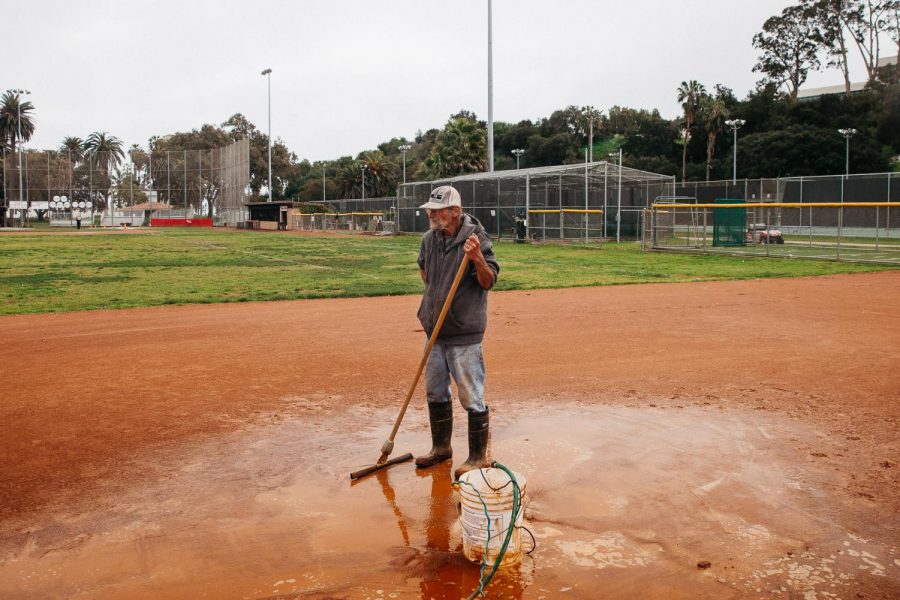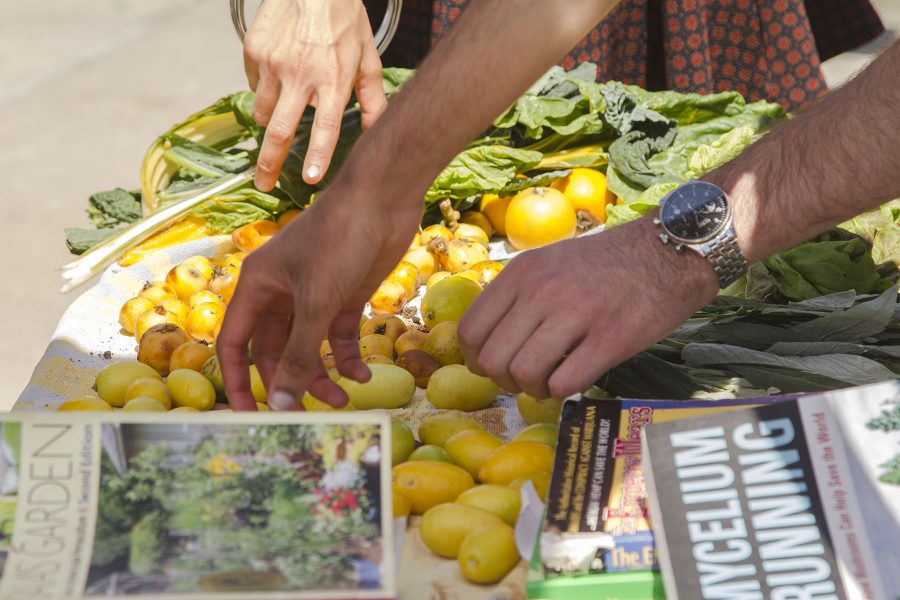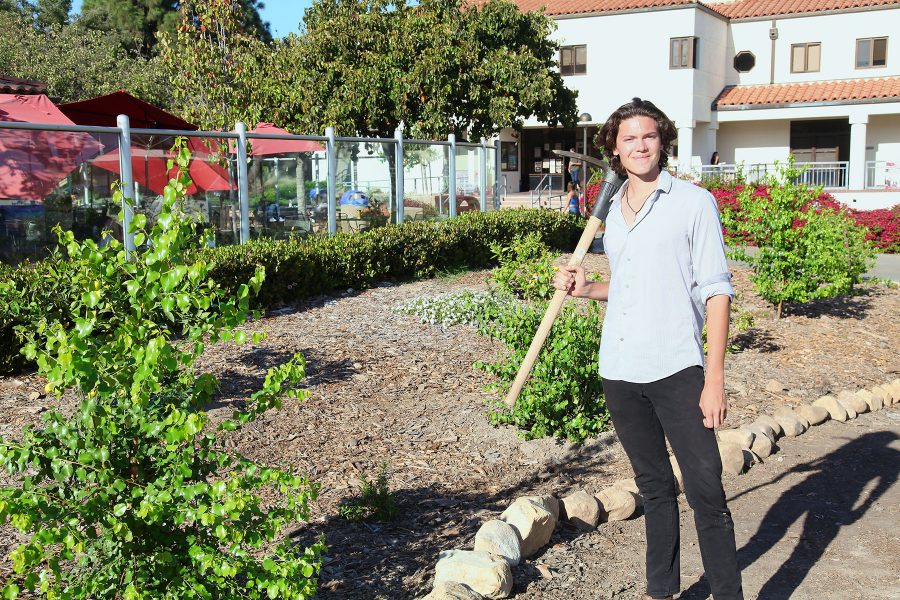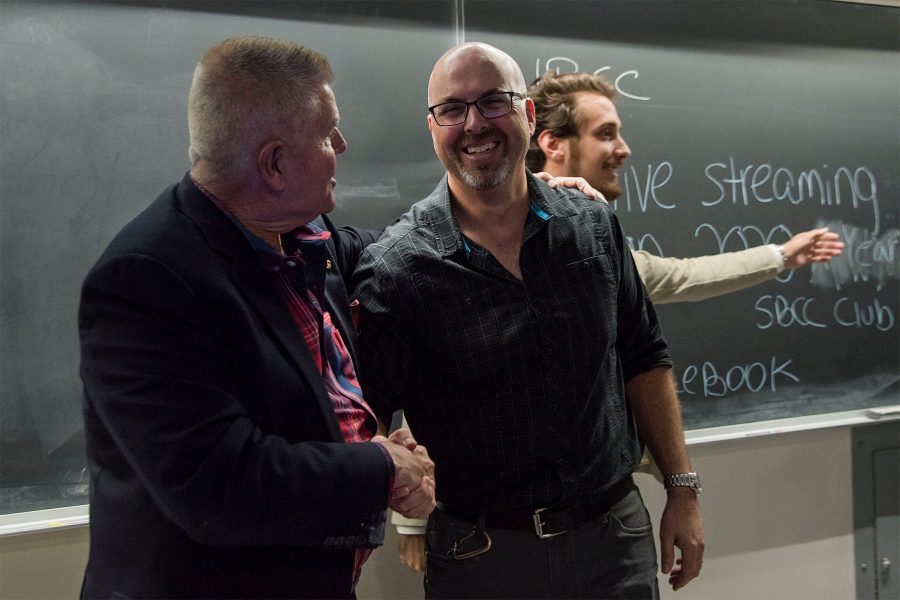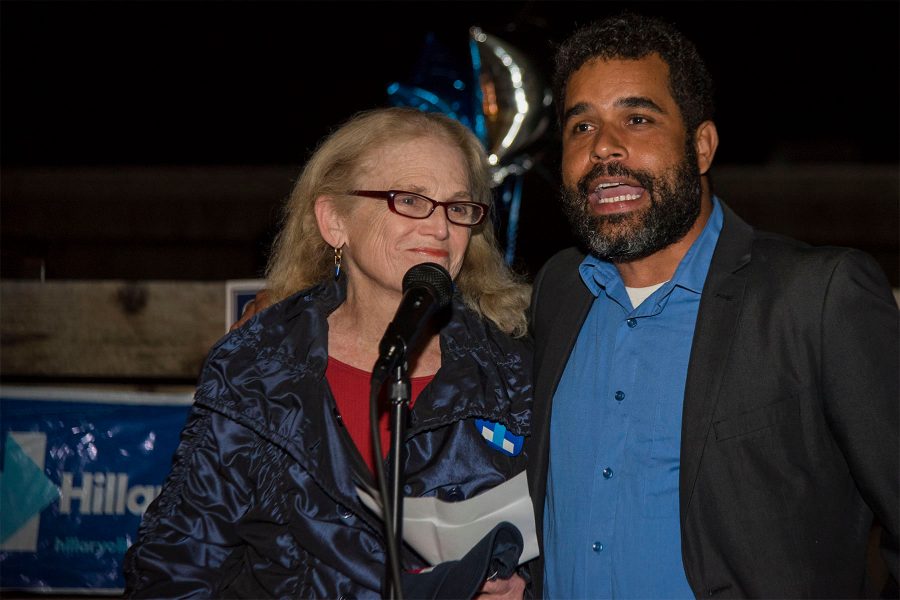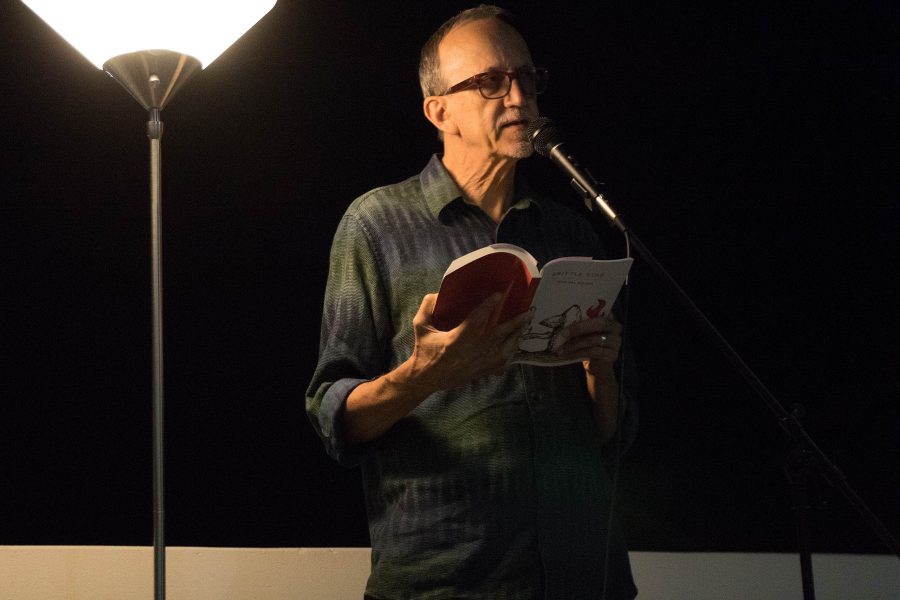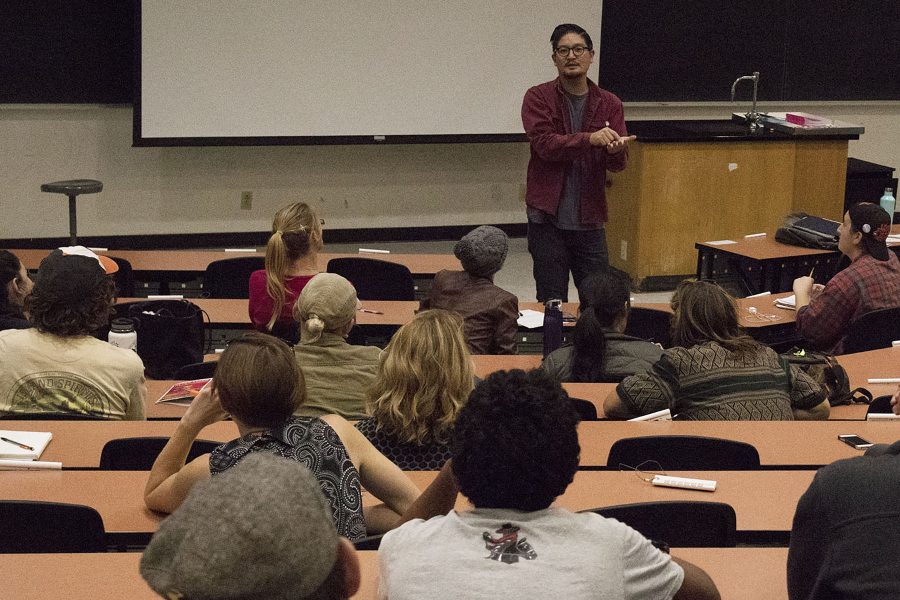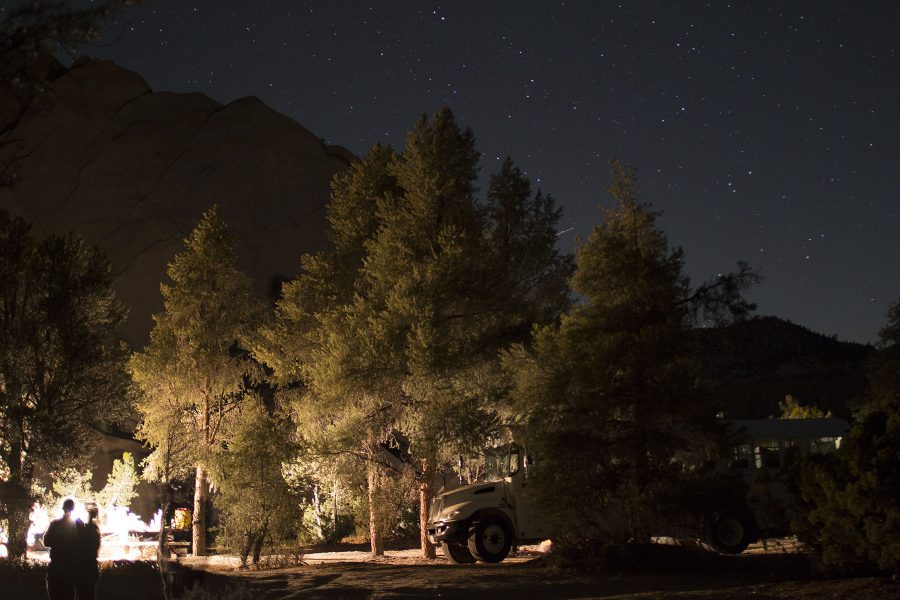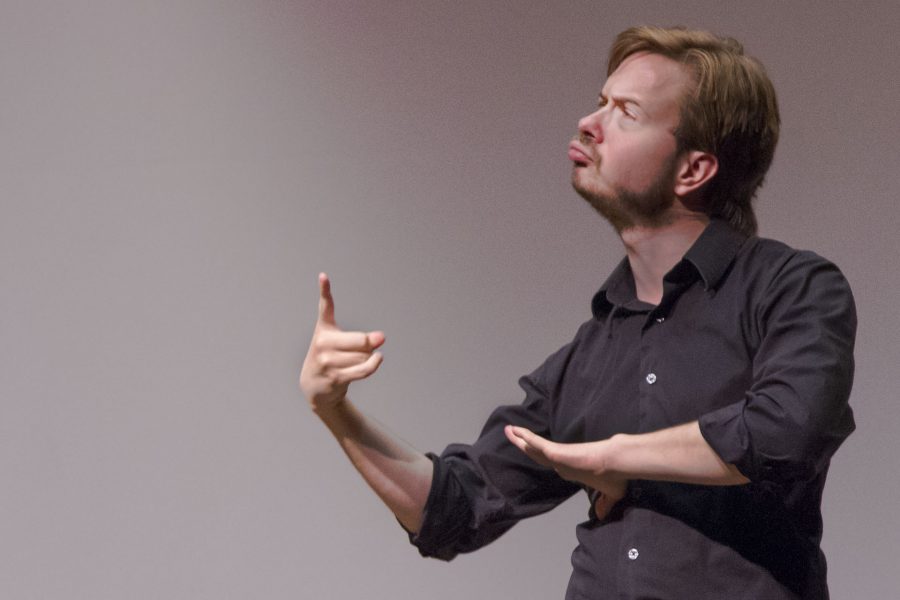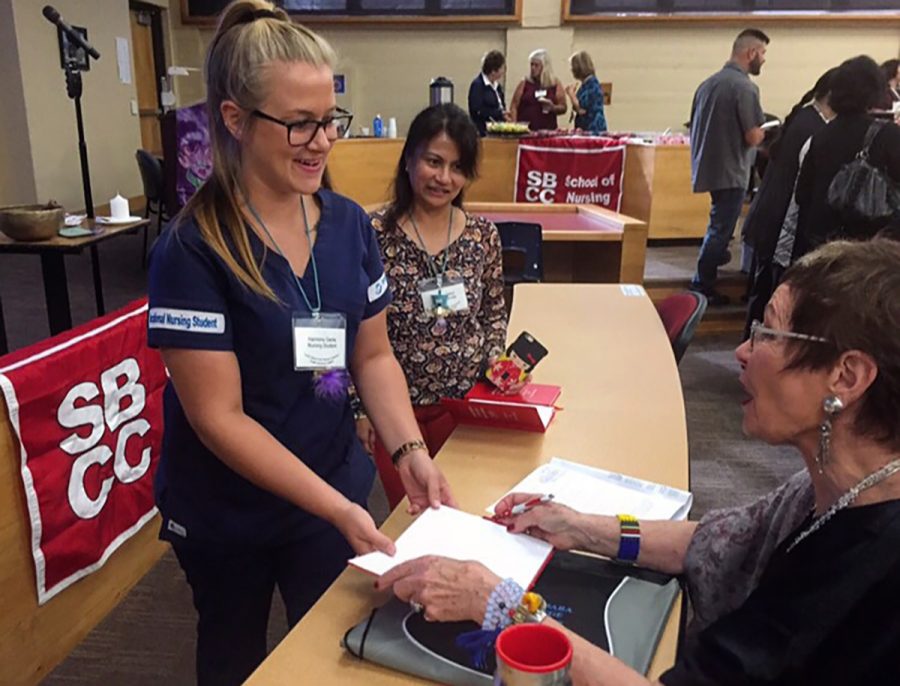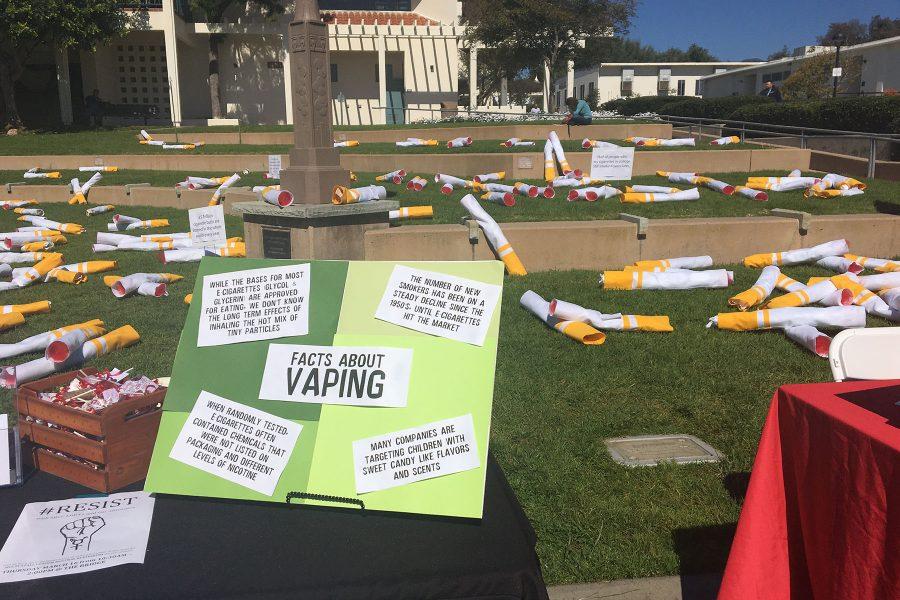Students heard a first-hand tale of the recent 8.8 magnitude earthquake in Chile from a geologist who was at the epicenter of the quake when it hit.
Dr. Barry Keller, a hydrogeologist, spoke to a full house of about 60 City College students, faculty members and fellow colleagues on April 9 in EBS-102 about his experience during the quake and subsequent aftershocks. Showing slides on a projector of his own pictures as well as newspaper photos, he also provided maps of the region and explained the seismology behind the quake.
Keller speaks fluent Spanish and lives in a concrete house in Southern Chile in a town called Pichilemu. He built the house ten years ago with his wife Rosie, and live there for part of the year. Keller was awake and in the third floor of his home when the quake hit at 3:34 a.m. on Feb. 27.
“I was thinking, ‘this is for real,’ clearly something really big,” Keller said. “And after 20 seconds I was thinking, ‘I’m ready for this to end.'”
The quake lasted three minutes, and the following aftershocks were as big as 6.9. There was also a tsunami.
Keller described Chile as having a similar latitude and climate compared to much of Southern California, but the mountains are higher and the quakes are bigger.
The quake region, along the Peru and Chile trench, is known as a subduction zone. Subduction occurs when one tectonic plate is forced below another.
Keller described the subsequent aftershocks as “sharp,” and said the feeling is somewhat similar to flying in an airplane with very strong turbulence. He said a lot of people in areas south of him were “worse off and isolated,” and power outages in the region led to no water pressure, among other problems.
“I was lucky to be prepared, completely by accident,” he said.
He said most of the newly constructed buildings survived the quake very well, and that the adobe houses were “the worst off.”
One of the adobe structures destroyed was a funeral parlor.
“Fortunately, most of the people inside were already dead,” Keller said.
Keller’s house is sensitive to quakes, but designed to be “resistant to seismic motion,” he said.
Though the quake moved things, forced things off shelves, and left broken glass and debris on the floor, he made it clear that other places were indeed worse off. He showed photos of landslides, collapsed bridges and buildings, and an airport terminal in Santiago that was severely damaged.
Keller stressed that he wanted to focus only on the “physical effects of the earthquake.”
“One thing I don’t want to get into is the ugly looting that happened,” Keller said.
As for the tsunami, whose currents were felt in Santa Barbara and Ventura, the waves hit most places in about 20 minutes, some of them reaching 10 meters high, though it was hard to get more exact estimates of the tsunami’s measurements, Keller said.
“The estimates for the tsunami are dark, it’s 3:30 a.m., and someone looking at this is probably scared excrement-less,” he said.
When asked if Californians are as tsunami-aware as Chileans, Keller said that while most Chileans run away from the big waves, Californians tend to run toward them.
The speech was hosted by the college’s Earth and Biological Sciences department.


